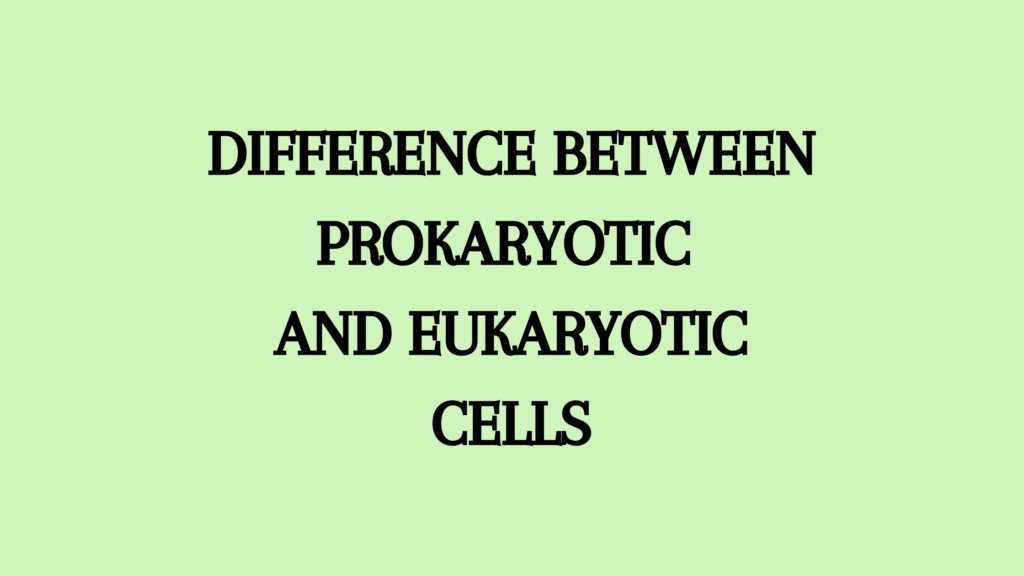Cell biology is a biological science that deals with the study of the fine structure of cells from morphological, evolutionary, biochemical, physiological, developmental, genetic, and pathological points of view. It is also called cytology. In recent times, it has shown tremendous progress and has become fundamental in studying the structure and function of living organisms.
Introduction to Cell Biology
The cell itself can be regarded as the vital unit of an organism and the anatomic and physiologic substrate of biological phenomena.
We can also say that modern cell biology interprets and explains the phenomenon of metabolism, biosynthesis, heredity, sex variations, mutation, and evolution of living organisms in terms of molecules or macromolecules such as proteins, ribonucleic acids, and DNA.
History of Cell Biology
Cell biology is comparatively a young biological science and has taken its identity by the end of the 19th century.
Ancient philosophers and naturalists like Aristotle and Paracelsus concluded that all animals and plants are made of some repeated elements in each of them. They refer to the structures such as roots, leaves, and flowers that are commonly seen in different plants and organs in the animal kingdom.
Many centuries later, the world of microscopic dimensions was opened after magnifying lenses were invented.
The beginning of cell biology can be visualized in the 15th century when Da Vinci in 1485, stressed the use of lenses to view small objects. In 1658, Jan Swammerdam gave the first description of a cell in his account of RB cells in frogs.
Cells
Cytology came into existence with the discovery of a cell in 1665 by an English botanist Robert Hooke (1635-1703) while examining a thin slice of cork under a compound microscope. Hooke observed its compartment-like honeycomb structure, which resembled a honeycomb’s cells. They were named cells, originating from the Latin word Cellula which means small room.
In 1672 Marcello Malphigi of Italy and Nehmian from England worked out in detail the form and arrangement of cells in different parts of the plant body. Malphigi also studied a variety of animal cells microscopically and therefore he is considered the Father of microscopic anatomy. Still, the presence of living contents was beyond their consideration.
Cell Theory
In 1846 H Von Mohl and 1855 R Virchow confirmed that the cells come from preexisting ones- “Omnis cellula e cellula”. In 1879, cell theory was formulated by two German microscopists M J Schleiden and Theodore Schwann independently in 1838 and 1839 respectively.
The cell theory states that the bodies of both animals and plants are composed of cells and that each cell can act independently, but also function as an integral part of a complete organism.
Various cytological investigations show that all living organisms are not cellular as considered by cell theory. Some are without any true cells and are called acellular. Most viruses have no protoplasm or nucleus but only DNA/RNA as their genetic material.
Discovery of Protoplasm
Protoplasm is defined as a complex colloidal system having inorganic and organic compounds in such a combination that it remains able to perform all life activities.
- It was again Robert Hooke who saw the cavities of cells filled with juice.
- In 1840 J E Purkinje named the cell contents as protoplasm.
- Huxley in 1868 referred to protoplasm as the physical basis of life.
In 1892 O Hertwig started the protoplasm theory. The protoplasm theory states that all living matter of which animals and plants are formed is protoplasm.
The portion of protoplasm which occurs between the plasma membrane and the nucleus is called cytoplasm while the portion of it occurring in the nucleus is called nucleoplasm. It is also confirmed that a cell may contain protoplasm without a definite nucleus as in the case of bacteria.
Nucleus
Eventually, the parts of the protoplasm were recognized as nuclei. This controlling center of the cell was first discovered by Robert Brown in 1831.
In 1832, Wagner discovered the nucleolus. Details regarding the structure and division of cells were brought to light by Strassburgar. He described mitosis in plant cells and introduced the term cytoplasm and nucleoplasm.
Cell divisions came to be recognized as a basic phenomenon in the growth and reproduction of organisms. Thus a cell may be defined as a piece of nucleated cytoplasm surrounded by a cell wall or membrane existing singly or in groups and containing structures of various sorts.
Cell Biology in the 20th Century
In the 20th century, various microscopic techniques have been employed in cytological investigations. Methods of tissue culture have made possible the study of living cells.
Moreover, micromanipulators, ultramicrotomes, chromatography, electrophoresis, X-ray microscopy, spectrophotometry, X-ray structure analysis, etc have provided new opportunities for cytologists to investigate minute details of cells and their components.
On the whole, cell biology has given a great impetus to early and modern cytologists to explore new vistas in biological science. Modern cytological studies help understand various life activities in terms of molecules in curing various chronic diseases and improving the breeds of plants and animals.
Importance of Cell Biology
Cell biology is related to other branches of science such as molecular biology, genetics, immunology, development biology, biochemistry, etc. It helps relate and differentiate between unicellular and multicellular organisms. Cell biology is also crucial for understanding the internal mechanisms of cells such as metabolism, reproduction growth, etc.
Depending on the related branch of cytological studies, there also are sub-divisions of cell biology such as Cytogenetics, Cell culture, Cytotaxonomy, Cytopathology, Cyto ecology, Cell physiology, Cytochemistry, etc.
References
- Verma, P.S and Agarwal, V.K. 1993. A Textbook of Cytology. S. Chand & Co, New Delhi.
- Gerald Karp. 2002 Cell and Molecular Biology, John Wiley & Sons, New York
- https://asccollegekolhar.in/wp-………/FYBSC Introduction to Cell biology.pdf




